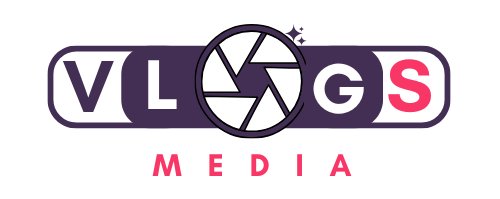In 2025, the fashion industry finds itself at a crossroads, grappling with a complex dilemma: how to drive innovation while maintaining ethical, sustainable, and inclusive practices. As the industry evolves, technological advancements, creative designs, and business models are reshaping fashion in ways we never imagined. But with these exciting innovations come a series of challenges and concerns that brands, designers, and consumers must navigate.
This fashion innovation dilemma in 2025 isn’t just about designing the next big trend or creating cutting-edge technology. It’s about finding the balance between pushing the boundaries of what fashion can achieve and ensuring the industry remains accountable for its impact on people and the planet.
1. Sustainability vs. Technological Innovation
Sustainability has been at the forefront of fashion discussions for years, and 2025 is no exception. Fashion is one of the most polluting industries in the world, which means there is a pressing need for environmentally friendly alternatives. As brands explore innovative ways to reduce waste, the dilemma is how to keep innovation sustainable.
Technological advances, such as AI-powered design processes, 3D printing, and smart textiles, have immense potential to revolutionize the industry. However, these innovations often require significant energy and resource consumption and industrial processes that could outweigh their environmental benefits. As a result, fashion brands must carefully assess the environmental cost of these new technologies before taking the plunge.
Some brands, such as Stella McCartney and Patagonia, are leading the way in combining innovation with sustainability, using recycled materials, and reducing their carbon footprint. But the industry as a whole still faces a dilemma: how can we embrace cutting-edge technologies without losing sight of the critical need to protect our planet?
2. Fast Fashion vs. Slow Fashion Innovation
The fast fashion model, based on speed, accessibility, and trend rotation, continues to dominate in 2025. However, this model contradicts the principles of sustainability and long-term value. The industry’s growing commitment to reducing waste and adopting ethical practices often contradicts the very foundations of fast fashion.
Brands are increasingly looking for ways to innovate by embracing on-demand production, AI-driven manufacturing, and even biodegradable fabrics to reduce overproduction. But even with these innovations, the fast fashion model, which thrives on mass production and consumption, remains a significant challenge.
The dilemma for designers and retailers is whether they can continue to innovate within this fast-paced framework or whether the industry should embrace a slower, more intentional fashion cycle that prioritizes craftsmanship, quality, and sustainability over speed and volume.
3. Inclusion vs. Exclusive Innovation
The push toward inclusivity in fashion has become a defining trend of the past decade, with brands diversifying their offerings to cater to a wider range of body types, ethnicities, genders, and abilities. However, innovation in fashion often focuses on pushing the boundaries of design, materials, and aesthetics, sometimes creating items that are exclusive, avant-garde, or difficult for many consumers to access or afford.
The dilemma of 2025 is how to innovate in ways that are both revolutionary and inclusive. Cutting-edge fashion may appeal to a small elite, while innovations in mass-market collections can sometimes overlook the needs of underserved groups. The question then becomes: can innovation in high fashion be both avant-garde and accessible, or should innovation remain reserved for those who can afford it?
Brands like Savage X Fenty and Reebok are leading the way in championing inclusive fashion through body-empowering campaigns and expanding their product lines. However, as designers push the boundaries of creativity and technology, there is a growing tension between exclusive, high-end designs and the desire for fashion that is truly accessible to all.
4. Integrating Technology and Craft
Fashion has long been a marriage of art and craft, with designers and artisans bringing their creativity and expertise to every stitch. As we approach 2025, technology is playing an increasingly important role, from AI-assisted design tools to augmented reality shopping experiences and wearable technologies that interact with users in new ways.
While these technologies have the potential to streamline production, improve the consumer experience and even redefine the way we wear our clothes, there is growing concern that human craftsmanship is being lost in the race to automation. In some cases, the craft and artistry that define the world of fashion is being overshadowed by technological processes.
The dilemma, then, is how to marry the precision and efficiency of technology with the emotional and tactile elements that have always been at the heart of fashion. Can designers continue to create custom, intricate pieces while taking advantage of the convenience and possibilities offered by technological advances?
5. Consumer Demand for Instant Gratification vs. Long-Term Value in Fashion
Today, consumers expect instant gratification. With the rise of digital fashion, on-demand manufacturing, and virtual try-ons, customers can browse and purchase products faster than ever before. However, this thirst for instant access to the latest trends contradicts fashion’s ideals of long-term value and timeless design.
In 2025, this creates a significant dilemma for brands looking to innovate. On the one hand, speed and convenience are paramount to meeting consumer demand; on the other hand, fashion’s sustainability and longevity depend on creating timeless pieces that don’t disappear from the trend cycles each season.
Innovative fashion brands are finding ways to balance limited-edition collections with timeless designs, but the question remains: how can we create fashion that endures beyond the culture of instant gratification while meeting today’s demand for immediacy?
6. Digital Fashion vs. Physical Retail
The rise of digital fashion has been one of the most significant innovations in recent years, with designers experimenting with virtual clothing and digital avatars. In 2025, many high-fashion brands are embracing the metaverse and NFTs (non-fungible tokens) as the new frontier of fashion.
While digital fashion offers exciting opportunities, including reducing the environmental impact of physical production and creating innovative new shopping experiences, it also raises questions about the future of physical retail. As digital fashion becomes more mainstream, will the demand for physical clothing diminish? Or can we find ways to integrate the digital world with physical retail, creating a harmonious balance?
Conclusion: The Way Forward for Fashion Innovation
The fashion innovation dilemma of 2025 is a balancing act, where industry leaders must carefully consider the trade-offs between creativity, technology, sustainability and inclusion. As the industry continues to evolve, finding solutions that enable progress without sacrificing ethical values will be key to ensuring a thriving and forward-thinking future for fashion.
The fashion industry is evolving towards a more responsible and innovative future, but it won’t happen overnight. As brands, designers and consumers navigate this ever-changing landscape, the challenge will be to continue to innovate in ways that preserve the values of sustainability, craftsmanship and inclusion, ensuring that the future of fashion is both exciting and responsible.







